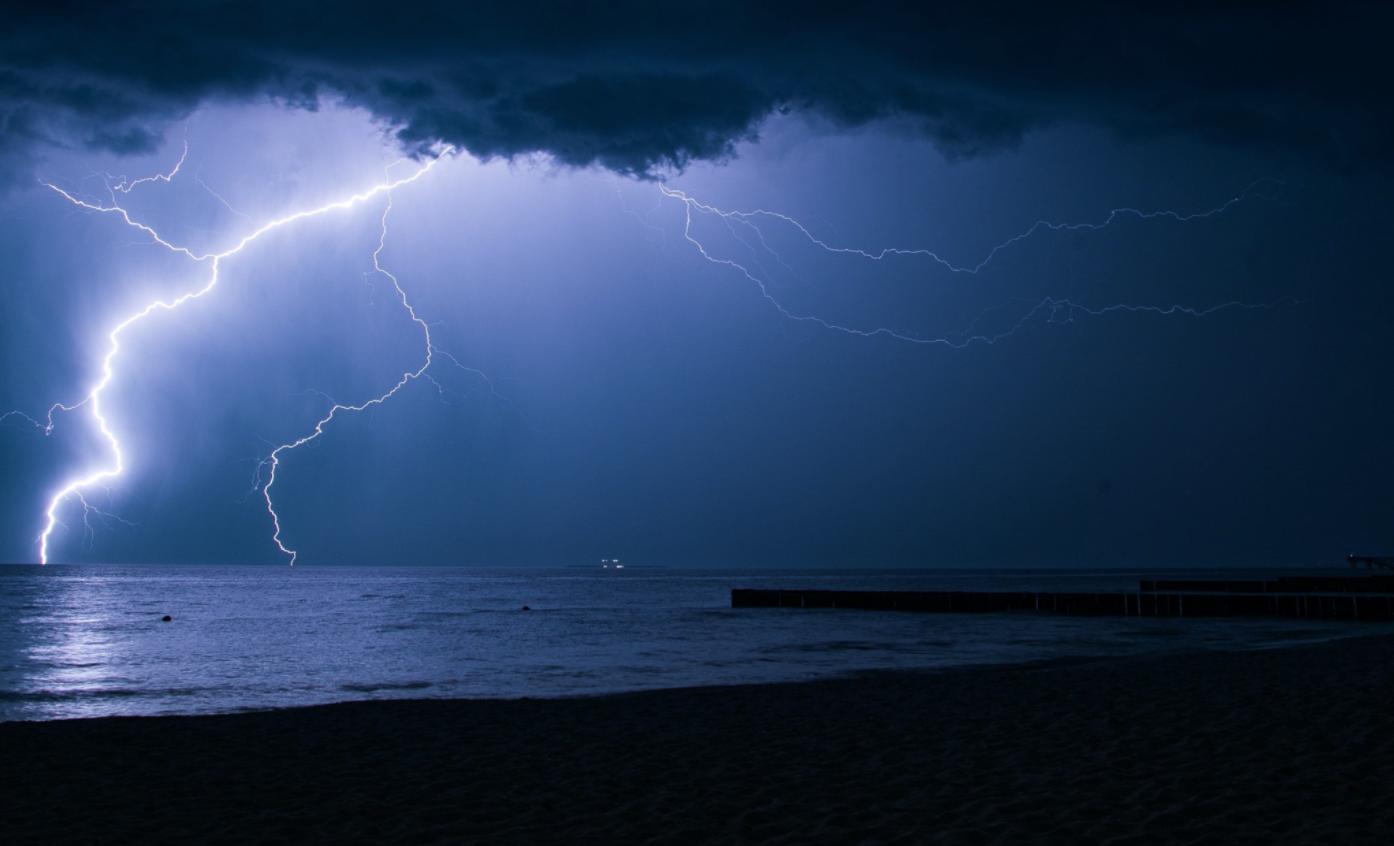Article Courtesy: inthebite.com | Originally Published: 8/12/2021 | Click here for original article
Lightning Strike: The Aftermath and the Action Plan
By Capt. Kevin Deerman
Our plan for 2018 was to get out of the boatyard early and do some springtime travelling before the Gulf tournament season. Nature, however had other plans for us. Two days before our scheduled haul out, we suffered a major setback. The culprit? On January 28th, we took a direct lightning strike.
Thankfully, no one was on board at the time and nobody was injured. This was the third time lightning struck a boat I was working on. Many have been in this situation before—and most everyone knows someone who has experienced this. I thought some information on lightning strike response might be a timely, useful column.
I’m very thankful that the boat was tied up in the slip at the time of the strike. We lost the majority of the electronic systems on the mains and the generators—making them all inoperable. In previous strikes, we were at least able to operate the boat because the engines and gens were not computerized. All communications were down except for the Iridium GO, which was plugged in to an external antenna. In addition, all electronics, most of the audio/video systems, bow thruster controls, the Seakeeper, fire system, boat systems monitors, underwater lights, battery monitor, navigation lights and most of the external lighting were all out as well. The damage was pretty comprehensive.

That is the bad news. The good news? We made a lot of progress toward getting back up and running and and were at that time ahead of schedule. We knew, however, we would be chasing gremlins for a least another six months or so. Our progress was mainly due to having a good insurance policy and some good people in the industry trying to get us back up and running. Chubb Insurance was sending us checks as we go, which really helps.
What should you do if lightning strikes your boat? Start by immediately calling your insurance agent and all vendors or techs that might be involved in the repair. Start from top to bottom and make a detailed list of all damaged items. Set up a meeting and go through the list on the boat with your insurance surveyor. Keep them informed of any additional items you may find.
Make copies of all invoices and receipts for the insurance company throughout the repair. In the three times I’ve had to deal with strikes, they have entered through the antennas, completely destroying them. Strips of shredded fiberglass in the cockpit and on nearby docks are a lightning strike’s calling card. The exit wounds were a little tougher to find. The strike’s exit point was only visible on the first boat.
In that case, the electricity jumped from an engine mount, traveled through the plastic bowl of a racor filter (leaving a quarter sized hole on both sides and diesel fuel everywhere), before finally departing the boat through the main engine thru hull on the opposite side of the engine room. The exit point showed discoloration of the ball in the valve, and the valve was completely locked up. This time, there was nothing visible for an exit path. We did lose all underwater lights as well as our large chirp transducer that was flush mounted in the keel.






